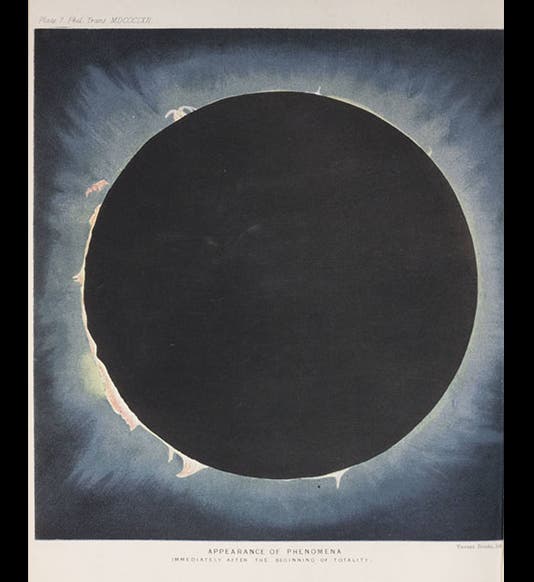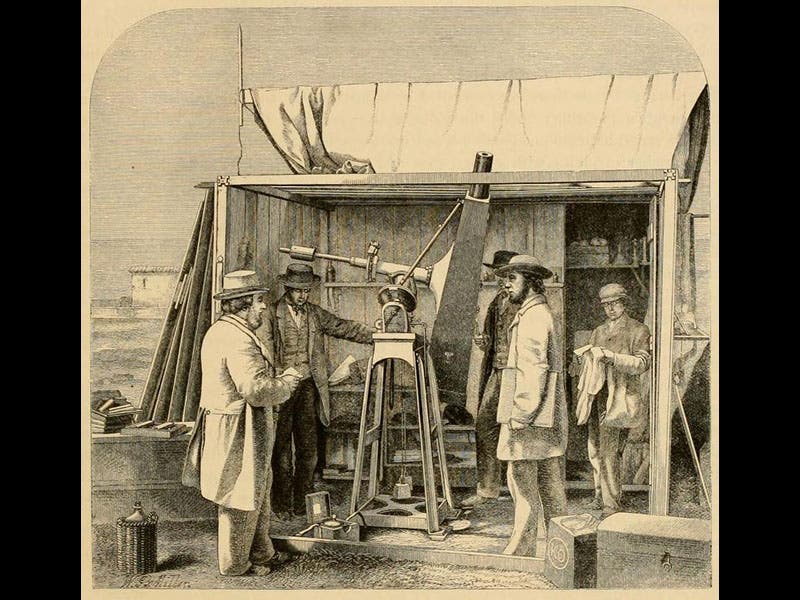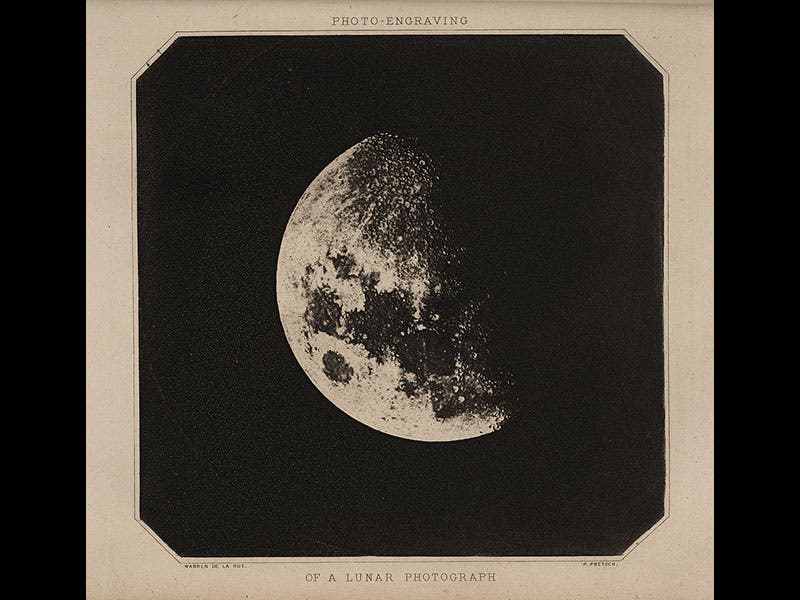Scientist of the Day - Warren De la Rue
Warren De la Rue, a British astronomer and photographer, was born Jan. 18, 1815. De la Rue was the father of celestial photography in England. He saw his first astronomical photograph, a daguerreotype of the moon made at Harvard, at the Great Exhibition of 1851 in London, and he never looked back.
On July 18, 1860, there was a total eclipse of the Sun, which was visible only in Spain. There had been many such solar eclipses over the centuries, but this was the first that might be captured on a photographic plate, since photography had only recently been invented. Taking a picture of the Sun is more difficult than photographing the Moon, because the Sun is so dazzlingly bright. De la Rue invented a special instrument for the purpose, called a photoheliograph, and he took the instrument and a large crew to Rivabellosa in northern Spain to tackle the July 18 eclipse. In those days, all exposures were recorded on wet collodion plates, which had to be prepared on the spot and then developed immediately. In the wood engraving above (second image), made from a photograph, we see his portable observatory (for which de la Rue obligingly removed the front wall for the photographer), and inside we can identify the heliograph and the darkroom beyond. De la Rue took two plates during the two minutes of totality, and both were stunningly successful. There was no way to publish a photograph at the time, so de la Rue had two color lithographs made of the plates, one taken near the beginning of totality (first image) and the second near the end (third image), and he included them with his published paper in the Philosophical Transactions of the Royal Society in 1862. For the first time, astronomers had a nearly exact record of the solar flares and solar corona that become visible only during a total eclipse. We displayed one of De La Rue's lithographs in our 2013 exhibition, Crayon and Stone, which unfortunately is not available online.
One of De la Rue's other contributions to the field of astrophotography was discovering how to print multiple copies of a photograph, allowing reproduction in a journal or monograph. Working with a colleague, he found a way to produce a copperplate engraving from a photographic negative, and he demonstrated his success with a photo-engraving of the Moon, which he published in the Monthly Notices of the Royal Astronomical Society in 1865. We displayed the image, and discussed the reproduction process, in our exhibition, The Face of the Moon: Galileo to Apollo, which happily is available online. We reproduce the lunar photo-engraving above (fourth image). An albumen print portrait of De la Rue (fifth image) was taken at about the same time, and is now in the National Portrait Gallery in London.
Dr. William B. Ashworth, Jr., Consultant for the History of Science, Linda Hall Library and Associate Professor, Department of History, University of Missouri-Kansas City. Comments or corrections are welcome; please direct to ashworthw@umkc.edu.











